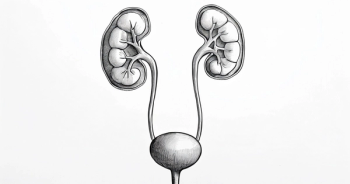
Targeted Therapies in Oncology
- May I 2025
- Volume 14
- Issue 6
- Pages: 58
Experts Will Explore Targetable Resistance Approaches During Lung Cancer Conference
For patients with EGFR-mutated NSCLC, treatment options in the frontline include osimertinib monotherapy, amivantamab with lazertinib, and osimertinib combined with platinum-doublet chemotherapy.
The importance of precision therapeutics will be an overarching theme spotlighted during the upcoming 26th Annual International Lung Cancer Congress®. Developing treatment strategies to identify the tumor biology, identifying specific driver mutations, and using targeted therapies to attack the cancer’s genetic makeup are essential for optimal outcomes. However, because of the disease’s heterogeneous nature, treatment resistance remains a formidable challenge.
“I anticipate a continuing emphasis on the appropriate use of precision therapeutics,” Sandip P. Patel, MD, professor of medicine, UC San Diego Health, California, and conference cochair said during an interview with Targeted Therapies in Oncology. Many trials are currently investigating precision oncology techniques that leverage molecularly defined cohorts.
One of the more common molecularly defined cohorts is EGFR, which now has 3 frontline therapeutic options for patients. “Therapeutic resistance is a common challenge, so using similar precision approaches to address targetable resistance has been an area of active interest,” Patel said.
For patients with EGFR-mutated non–small cell lung cancer (NSCLC), treatment options in the front line include osimertinib (Tagrisso) monotherapy, amivantamab-vmjw (Rybrevant) with lazertinib (Lazcluze), and osimertinib combined with platinum-doublet chemotherapy.1
ORCHARD
The phase 2 ORCHARD (NCT03944772) clinical trial is evaluating osimertinib used in combination with targeted therapies driven by the patient’s resistant biology.2 “One of the most common resistance mutations that we see is MET amplification. That has been associated with first-line EGFR-directed therapy,” Patel said.
Patients enrolled in ORCHARD are assigned to 1 of 3 groups after first-line osimertinib progression and based on molecular profiling.
Group A will evaluate patients with protocol-determined biomarkers of resistance treated with novel osimertinib combination therapies; group B will evaluate patients without a detectable protocol-determined biomarker treated with nonbiomarker-selected therapies that are chemotherapy or tyrosine kinase inhibitor–based; and group C (observational) will include patients with histologically transformed disease and/or a biomarker with an available therapy not investigated in ORCHARD.
The study is designed to allow for adaptability to include emerging treatments related to novel resistance mechanisms. The primary end point is objective response rate, and secondary end points include progression-free survival (PFS), duration of response (DOR), overall survival (OS), and safety.
“One interesting point about MET amplification is how we test for it often determines how we detect it,” Patel said. “Although the most sensitive way to detect MET is through tissue-based FISH [fluorescence in situ hybridization] testing, many oncologists use cell-free DNA approaches,” Patel continued.
Patel noted that several different studies are in progress that are exploring the use of antibody-drug conjugates (ADCs), such as patritumab deruxtecan, a HER3-directed ADC. “Hopefully, this will increase the PER© SPOTLIGHT number of therapeutic opportunities for our patients who have developed resistance to frontline EGFR-directed strategies in NSCLC,” he said.
Targeted Combinations
Trials evaluating combination therapies are focusing on targeted therapies and antibodies. “These include the
In MARIPOSA (NCT04487080), the combination of amivantamab-vmjw with lazertinib significantly extended OS compared with osimertinib in the front line for patients with locally advanced or metastatic NSCLC harboring EGFR exon 19 deletions (ex19del) or L858R substitution mutations.
These findings, presented at the 2025 European Lung Cancer Congress,3 also showed that at a median follow-up of 37.8 months, those given the chemotherapy-free regimen of first-line amivantamab plus lazertinib had a significantly longer median OS vs those who received osimertinib (HR, 0.75; 95% CI, 0.61-0.92; P < .005). The median OS for this combination has not yet been reached, and survival benefits continue to extend beyond the measured follow-up period (not reached [NR]; 95% CI, 42.9-NR). In the osimertinib group, the median OS was 36.7 months (95% CI, 33.4-41.0), consistent with that in prior studies evaluating osimertinib.
At 3.5 years, 56% of patients treated with the amivantamab/lazertinib combination were alive vs 44% of patients treated with osimertinib. Further, the median OS is projected to exceed 1 year beyond the median of 3 years seen with osimertinib, based on survival data.
In addition to OS, the amivantamab/lazertinib combination also showed benefit for several of the study’s secondary end points when compared with osimertinib. These include intracranial PFS, intracranial DOR, and intracranial overall response rate. Amivantamab plus lazertinib prolonged time to symptomatic progression by more than 14 months vs osimertinib (43.6 vs 29.3 months; HR, 0.69; 95% CI, 0.57-0.83; P <.001).
For safety, the profile of the amivantamab/lazertinib combination was consistent with that of the primary analysis. Observed adverse event rates were similar to those seen with other combinations that include amivantamab.
“I think this is a regimen that makes sense for patients who want to maximize their antitumor benefit while using an oral-only regimen,” Patel noted. “Especially given the amount of time it takes to come into the infusion center vs taking an oral medication,” he explained.
A phase 1 trial (NCT04676477)4 is evaluating
In the dose expansion portion, patients will be randomly assigned to receive either patritumab and osimertinib at the RCD (arm 1, ~ 60 patients) or 5.6 mg/kg of patritumab every 3 weeks (arm 2, ~ 60 patients). A third arm (arm 1b, ~ 60 patients) may be added to evaluate 2 provisional RCDs of patritumab plus osimertinib. The primary objective of dose expansion (arms 1, 2, and 1b) is to evaluate the efficacy of the combination vs monotherapy.
Final Thoughts
Patel offered his thoughts on an area of research that interests him: “I’m most interested in exploring immune-based approaches for those mutations that are traditionally viewed as more immune resistant, such as EGFR, ALK, and even subtypes of KRAS.”
For patients who develop smoking-related tumors, “we’ve developed a better understanding of harnessing the immune system to address that tumor type, but there’s no reason never-smoking–related tumors can’t be sensitive to immune therapies as well,” Patel said. “I’m keen on developing novel immunotherapeutics to help this patient population,” he concluded.
REFERENCES:
1. NCCN. Clinical Practice Guidelines in Oncology. Non-small cell lung cancer, version 3.025. Accessed April 10, 2025. https://tinyurl.com/2jatjb7v
2. Yu HA, Goldberg SB, Le X, et al. Biomarker-directed phase II platform study in patients with EGFR sensitizing mutation-positive advanced/metastatic non-small cell lung cancer whose disease has progressed on first-line osimertinib therapy (ORCHARD). Clin Lung Cancer. 2021;22(6):601-606. doi:10.1016/j.cllc.2021.06.006
3. Yang JC-H, Kim YJ, Lee S, et al. Amivantamab plus lazertinib vs osimertinib in first-line (1L) EGFR-mutant (EGFRm) advanced NSCLC: Final overall survival (OS) from the phase III MARIPOSA study. J Thoracic Oncol. 2025;20(3):S1-S97. doi:10.1016/S1556-0864(25)00632-X
4. Janne PA, Mostillo J, Shrestha P, et al. Phase 1 study of patritumab deruxtecan (HER3-DXd; U3-1402) in combination with osimertinib in patients with advanced EGFR-mutated NSCLC. J Clin Oncol. 2022;40(suppl 16):TPS3161. doi:10.1200/ JCO.2022.40.16_suppl.TPS3161
Articles in this issue
7 months ago
Dostarlimab Shows Response in Endometrial Cancer7 months ago
Frontline Dato-DXd Looks Promising in NSCLC








































